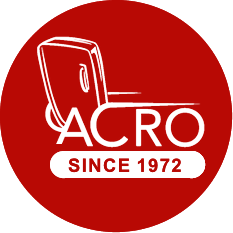What You Need to Know for Optimal Performance
In commercial refrigeration, ice machines are critical to operations—from serving cold drinks and preserving food to ensuring hygiene and customer satisfaction. However, misconceptions about how these machines work can lead to costly mistakes and inefficiencies.
At ACRO Refrigeration, we’re here to separate fact from fiction so you can get the best out of your equipment in Brisbane, Gold Coast and Sunshine Coast’s unique environments. Let’s explore and debunk some of the most common ice machine myths.
❌ Myth 1: Ice Machines Don’t Need Regular Maintenance
✅ Reality: Ice machines are not “set and forget” appliances. Like any mechanical system, they require routine maintenance to stay efficient and hygienic. Neglecting maintenance can cause:
- Reduced ice production
- Poor ice quality
- Increased breakdowns
- Health hazards due to mould, algae, or scale build-up
Pro Tip: Schedule regular servicing with ACRO Refrigeration to keep your system clean, safe, and performing at its best.

❌ Myth 2: All Ice Is the Same
✅ Reality: Ice comes in various shapes, sizes, and textures—each with specific uses. For example:
- 🧊 Nugget ice: Soft, chewable, ideal for beverages in cafés and healthcare settings.
- 🧊 Clear cubes: Slow-melting and visually appealing—perfect for upscale bars and restaurants.
- 🧊 Flake ice: Used for seafood displays or blended drinks.
Choosing the right type of ice enhances both customer experience and operational effectiveness.
❌ Myth 3: Ice Machines Freeze Up Because They’re Faulty
✅ Reality: Ice machine freeze-ups are often caused by external factors such as:
- Dirty or blocked air filters
- Incorrect water levels
- High ambient temperatures
While internal faults do occur, many issues stem from lack of maintenance or improper setup. A quick inspection by our technicians can usually resolve the problem before it worsens.
❌ Myth 4: Ice Machines Use Too Much Energy
✅ Reality: Modern ice machines are much more energy-efficient than their predecessors. Features like improved insulation, intelligent sensors, and programmable cycles help reduce energy use. However, dirty components or poor ventilation can still increase your power bills.
Solution: Choose an ENERGY STAR®-rated model and keep it regularly serviced to optimize efficiency.
❌ Myth 5: Ice Scoops Aren’t Necessary
✅ Reality: Using your hands to collect ice is an easy way to introduce contaminants and bacteria. An ice scoop is a basic but essential hygiene tool—especially in foodservice environments.
Best practice:
- Use designated scoops (never glasses or hands)
- Store scoops outside of the bin in a clean, dry container
- Train staff on safe handling procedures
❌ Myth 6: All Ice Machine Brands Are the Same
✅ Reality: Just like with any appliance, quality varies between brands. Key differences include:
- Reliability
- Ice production rate
- Durability
- Serviceability and parts availability
At ACRO Refrigeration, we help you choose the right machine based on your usage, space, and budget. We only recommend trusted brands backed by strong warranties and service support.
Conclusion: Get the Facts, Get Better Performance
Understanding your ice machine is essential for ensuring longevity, hygiene, and optimal efficiency. By debunking these myths, you’re already on the path to smarter refrigeration management.
Need expert guidance or service? ACRO Refrigeration is here to help with reliable advice, preventative maintenance, and 24/7 emergency support.
📞 Call us: 1300 227 600
📧 Email: workshop@acrorefrigeration.com.au
🌐 Visit: www.acrorefrigeration.com.au
🔄 Stay Connected
Follow us on Facebook, or LinkedIn for the latest updates on commercial refrigeration tips and industry news.
📰 Enjoyed this article?
Browse more helpful insights and case studies on our Refrigeration Blog










